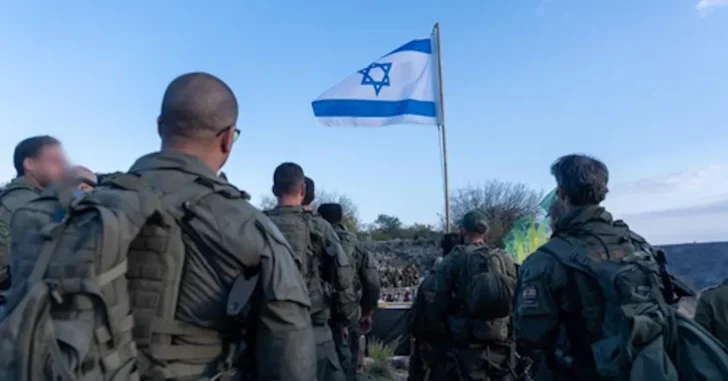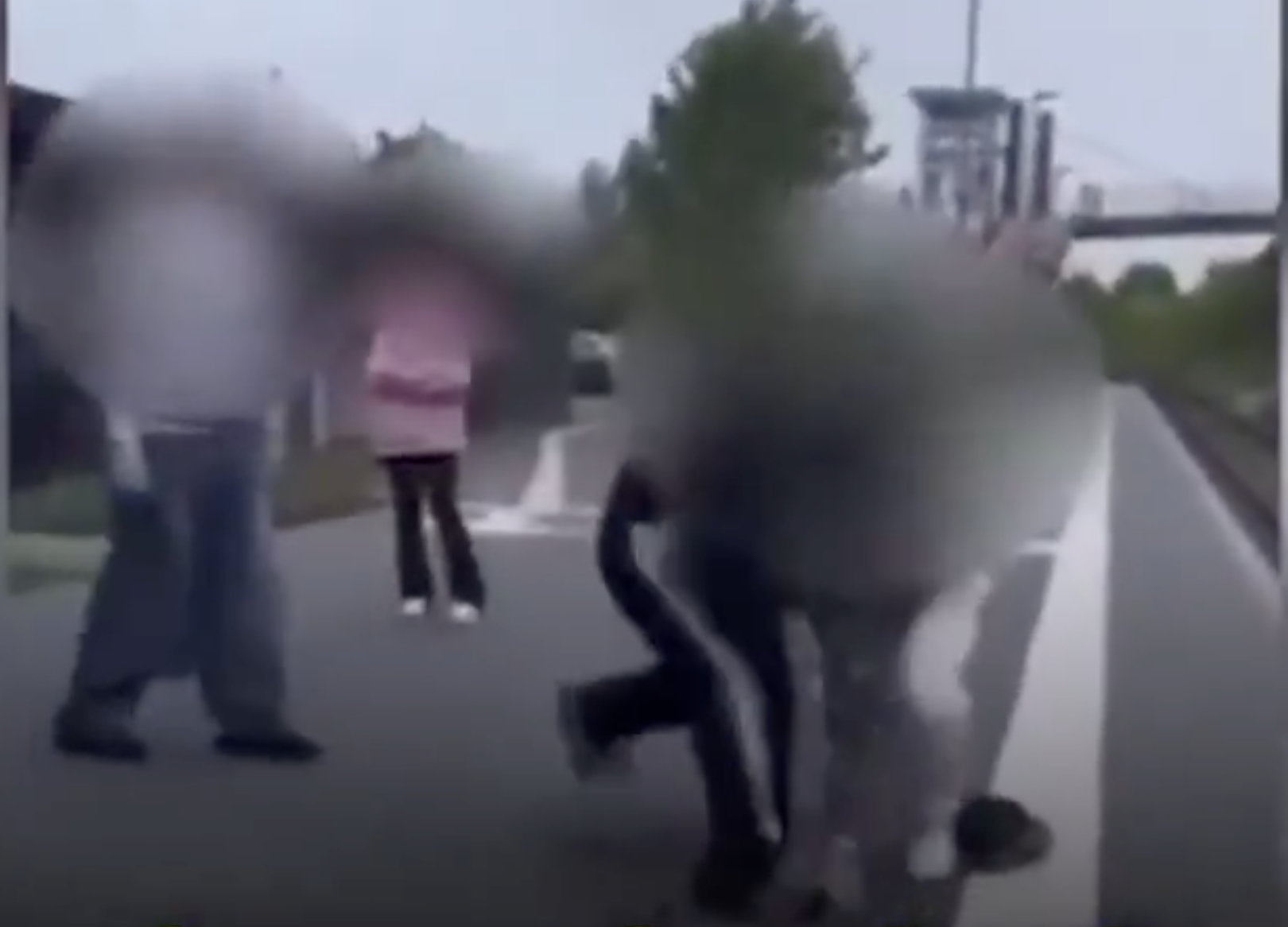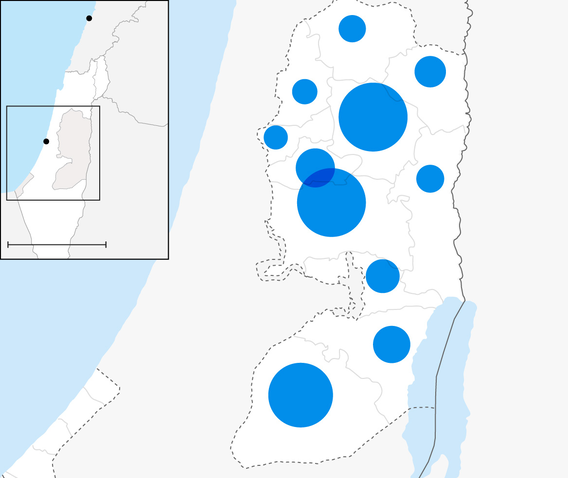Mondoweiss: Gazan aid-seekers ‘sniped in the head’ at GHF distribution center, witnesses say
Gazan aid-seekers ‘sniped in the head’ at GHF distribution center, witnesses say
 Palestinians carrying aid boxes from the Gaza Humanitarian Foundation, June 16, 2025. (Photo: Omar Ashtawy/APA Images)
Palestinians carrying aid boxes from the Gaza Humanitarian Foundation, June 16, 2025. (Photo: Omar Ashtawy/APA Images)Samir Shaat, a young man in his thirties, sits in the courtyard of Nasser Medical Complex, recounting what he describes as the worst day of his life.
On Saturday morning, Shaat went to the al-Shakoush aid distribution site in Rafah city run by the Gaza Humanitarian Foundation (GHF). After the closure of all other GHF sites across Gaza, this was the only one still operational. Shaat and his friend were there to bring back food for their families.
As soon as they arrived at 9:40 a.m., Shaat says, Israeli army tanks appeared on a high hill near the site and began firing with heavy machine guns at the thousands of civilians who were waiting for the U.S.-run company’s signal to enter the site.
Instead of returning home carrying food, Shaat returned carrying his friend, who was shot directly in the head. He carried him for more than a kilometer on foot, running in the hope of saving him. By the time he reached the hospital, his friend had already died on his shoulders.
The Gaza Ministry of Health announced that 18 deaths and over 50 injuries were recorded at Nasser Hospital following today’s aid massacre at the GHF center. The Ministry said that the deaths bring the total number of people killed at these centers to 805, while the number of wounded at GHF sites stands at 5,252.
‘They began sniping at us one by one’
In video testimony obtained for Mondoweiss, Samir Shaat sits in the courtyard of Nasser Hospital with his clothes soaked in blood. He describes what he saw at the GHF center earlier today as a “sea of blood.”
People carrying empty bags, hoping to fill them with food, came back wrapped in them like a shroud, Shaat says, maintaining that despite knowing the danger he faced in going to the GHF center, he chose to go anyway. “What drives us to go there other than having nothing to eat?” he says. “Imagine if your mother asks you for something to eat, or your little sister asks you for something to curb her hunger, and you stand there watching them slowly die of starvation day in and day out. I would walk straight into death to get them whatever I can.”
Shaat says that his brother was killed last week in a similar incident at one of the GHF’s centers. He explains that with his father also killed during the war, he is the family’s sole breadwinner.
The crowds were at least 500 meters away from the Israeli army’s location when it opened fire, Shaat says. “They began sniping at us one by one, shooting the starving civilians with direct shots to the head,” he recounts.
“They are deliberately killing us in front of everyone. They have killed hundreds of thousands of us, and the world does not move, so they increase their killing without caring about anything.”
Shaat opens the plastic shroud, unzipping it in front of the cameras gathered around him. “This is Ahmad, my friend. Look at his fresh blood, it hasn’t dried yet.” He points to the bullet entry wounds, all concentrated in the upper part of his body. “We had breakfast together and went on our journey to secure something for our families to eat. But as you see, I came back carrying my friend dead on my shoulders. He won’t return to his hungry family.”
We saw the soldiers from close range, aiming their weapons at our heads and sniping us like birds, as if we were worthless.
Ahmad Haddad, survivor of aid massacre at Rafah GHF center.
After a journalist asks what drives him to keep going to these centers, Shaat says, “Ask us instead: what else do we have to eat?”
Another survivor of the aid massacre, Ahmad Haddad, lies in a bed in the same hospital as he recounts the day’s events. “We go there because we want to eat,” he says in video testimony for Mondoweiss, speaking through labored breaths while letting out painful cries between sentences. “We know the danger there. But hunger is harsh. There’s no other choice.”
“The only food we can get is through the aid that they throw at us,” he continues. “But when we went today, the soldiers came out with their guns, and the tanks came out with their machine guns. We saw the soldiers from close range, aiming their weapons at our heads and sniping us like birds, as if we were worthless; as if they were amusing themselves with our blood and killing us by the dozens.”
Haddad says that Israeli tanks fired randomly at the crowds, while soldiers watched whoever stood up and sniped them in the head. “We lay on the ground, fearing the bullets and trying to save our lives,” he recounts. “But the soldiers were waiting for us, lying in ambush. Whoever stood up fell back dead.”
GHF poised to build ‘concentration camp’ in Rafah as ceasefire talks stall
The GHF’s aid distribution scheme continues to be widely condemned by international aid organizations for the daily occurrence of massacres inside or in the vicinity of its centers. This has led Palestinians in Gaza to describe the sites as “death traps” that use aid as bait to lure civilians into concentrated zones under Israeli military control.
The GHF has also been criticized for complementing Israeli military objectives of forcing Gaza’s population into these “cleansed” zones inside the Strip, with the objective of eventually expelling the civilian population from Gaza under the pretext of facilitating “voluntary migration.”
This objective was most recently vocalized earlier this week, when Israel’s Defense Minister, Israel Katz, announced that Israel would seek to “concentrate” Gaza’s population in so-called “humanitarian cities” built over the ruins of Rafah in southern Gaza. Katz said that all of Gaza’s 2 million people would be forced into this area ahead of their displacement. Katz’s statement has been widely condemned as a plan to build a “concentration camp.”
The GHF is seen by Palestinians as a vital component of this plan, providing humanitarian cover for Israel’s political and military objectives.
Earlier this week, Reuters reported on a proposal it had seen bearing the name of the Gaza Humanitarian Foundation detailing the construction of “large-scale transit camps called ‘Humanitarian Transit Areas’ inside — and possibly outside — Gaza.”
Today’s massacre at the Rafah aid site comes amid reports that ceasefire talks between Hamas and Israel in Qatar have stalled.
Muhammad Eslayeh collected testimonies for this story.








